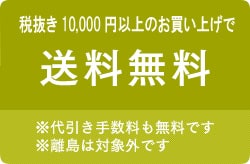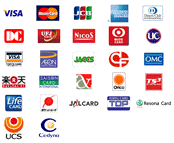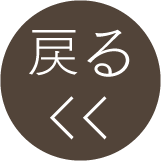For more information on contact tracing and the COVID protection framework, visit the Unite against COVID-19 website. Record keeping is the process of collecting details from all employees, customers and visitors who visit your workplace or location. If there is a case of COVID-19 in the community, public health officials and contact tracers use this information to identify people who may have been exposed to COVID-19. Even in the absence of additional legislation to protect the privacy of contact tracing data, the benefits of good accounting far outweigh the potential costs for everyone. Good results could make the difference between an epidemic that needs to be contained and the whole country that goes into lockdown. It is a relatively cheap and easy insurance to keep our communities safe. NZ COVID Tracer is a mobile software application that allows a person to record the places they have visited to facilitate the traceability of people who may have been in contact with a person infected with the COVID-19 virus. The app allows users to scan official QR codes at the premises of companies and other organizations they visit to create a digital newspaper. It was launched by the New Zealand Ministry of Health on 20 May 2020 during the ongoing COVID-19 pandemic. It can be downloaded from the App Store and Google Play.
[2] NZCT differs from most other smartphone contact tracing apps (e.g. B, the Bluetooth application of Apple and Google) in the sense that users must scan QR codes when entering premises or public transport vehicles. Scanning is a stressful but visible activity that can be used to check if the activity has taken place. However, monitoring and enforcement is costly and therefore depends primarily on individual self-motivation or peer pressure for the analysis to take place. The most interesting feature of using NZCT, when it was voluntary, was the extent to which scanning was not carried out by registered application users. To this end, it is interesting to observe how the use of the application has changed after the instruction that dictates its use. Actions for household members close contacts (also called secondary contacts) If someone in your household or bubble is a close contact and is not vaccinated and has been asked to self-isolate, then theirs: All public transport services and small passenger transport services, such as taxis, must display QR codes. Airlines and intercity buses are excluded from this requirement because they have a ticket with contact information. On December 10, the COVID tracing app received an update that would allow contact tracing via Bluetooth.
[16] [17] At the same time, the app`s source code was published on GitHub. [18] The COVID TRACING APP NEW ZEALAND allows users to scan official QR codes from the Ministry of Health in companies, public buildings and other organisations to find out where they have been to track contacts. People can also register their contact details on the official website of NZ COVID Tracer. [3] Information about people`s movements is securely stored on the user`s device by the Ministry of Health for 60 days before being automatically deleted. [4] Originally, the retention period for analytics data was 31 days, but an app update on September 9. September extended this time to 60 days to make it easier for contact tracers to link COVID-19 cases. [23] Contact tracing may include a call to the ministry or a health unit (PHU) who will advise you on screening, self-isolation, and how to check your health and well-being. Ministry call centre staff will identify themselves and inform you that they are calling the National Investigation and Research Centre (NTC).
They will also verify your name and contact information. These calls from ministry call centre staff typically come from (09) 801 3009 or (09) 306 8748. Good records and timely contact tracing will help stop the spread of COVID-19 and protect our businesses, communities and each other. New Zealand`s decision to make the scanning of QR codes mandatory is unprecedented in a Democratic Western economy. Smartphone tracking apps were reluctantly accepted in these contexts because their use was voluntary. However, the aim of the New Zealand rules – to force an entire population to document their movements to facilitate government processes – is certainly a violation of personal human rights to privacy, which warrants detailed discussion and debate before implementation. However, it seems unlikely that this will happen, as the Ardern government has an overwhelming majority in a state with a unicameral parliament that has suspended Ardern during the current lockdown. To be effective, the mandate must be in place when interaction resumes, so there is a rush.
New Zealand`s COVID tracing app was developed by the Department of Health in consultation with the Data Protection Commissioner and has also been subjected to independent security testing. All personal information and contact details recorded in the Tracer app will be provided to the National Close Contact Service. This information is retained solely for public health purposes and is not disclosed to authorities outside the health sector. All information entered through the Tracer app, including where users log in, is securely stored on the phone and automatically deleted after 60 days. Users have the right to share information with contact tracers. [3] [2] [6] [26] Information on contact tracing, the nature of contacts, and when to self-isolate or stay at home. The purpose of the collection is to allow the Ministry of Health to communicate with an individual in the event of a suspected or confirmed case of COVID-19. When you collect the necessary information, let people know that it is being collected to make it easier to find contacts. Mandatory Record Keeping Guidelines for Contact Tracing | privacy.org.nz (external link) The publication of the assessment aims to reassure the New Zealand public that NCTS provides a safe and appropriate solution to contact tracing processes to support the national response to COVID-19: there are Section 70 orders that address both those who have visited a place of interest during the relevant period and their household contacts, to self-isolate at home and seek advice from Healthline. Read section 70 of the Public Health Regulations. Nevertheless, we recommend that you keep contact tracing records and encourage the use of the NZ COVID Tracer app.
Effective contact tracing is crucial if the zero-tolerance policy is to be successful. While human control of the process is essential, its efficiency can be improved through the use of smartphone-based tracking apps. The QR code-based NZ COVID Tracer was launched in May 2020 as an opt-in tool to help contact tracers locate and warn potential contacts exposed to a positive case and inform them of how to proceed. Users are asked to scan QR codes when entering the premises and public transport they display. Voluntary digitization activity has been extremely disappointing, even in times of active community broadcasting, with less than one analysis per day recorded per active application, even though the applications were downloaded by more than 50% of the adult population. On December 10, the COVID Tracer app received a Bluetooth update that would create an anonymous record of every person the user has already approached, aligning New Zealand with other countries like Singapore that have been using Bluetooth contact tracing since March 2020. .













